WEST VIC REGION





The Parish sisters — including Wendy, Jodie and Sam — are continuing a strong farming tradition. PAGES 6 & 7
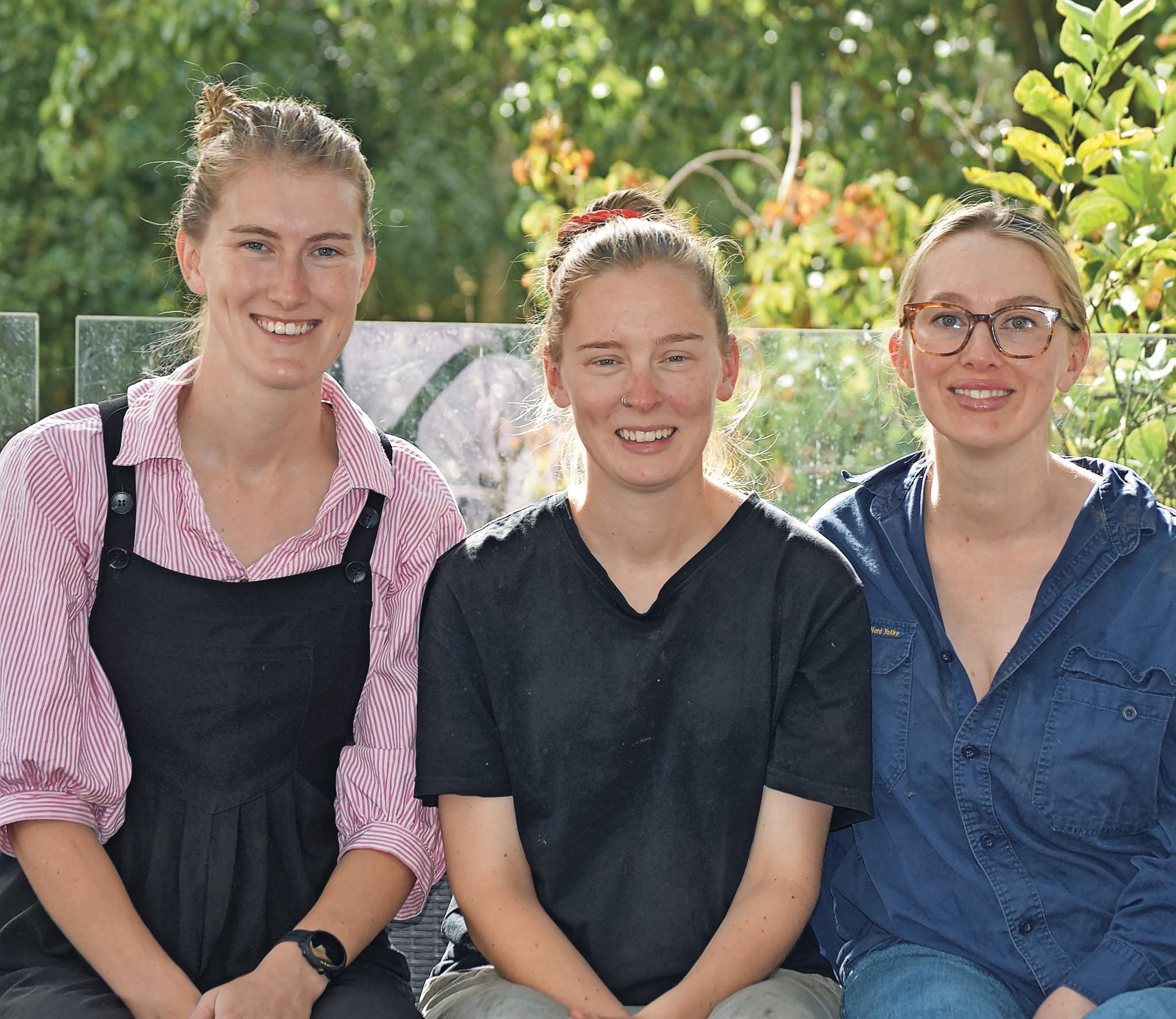
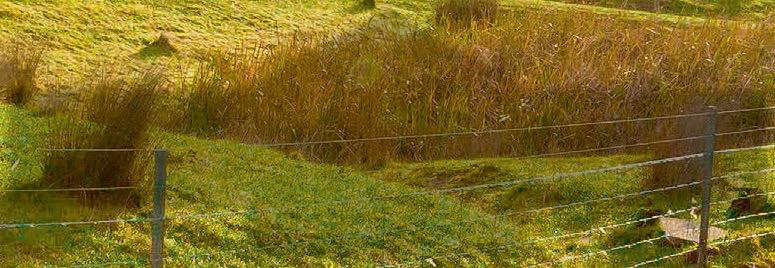



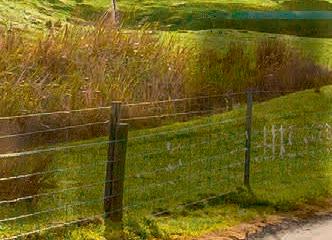
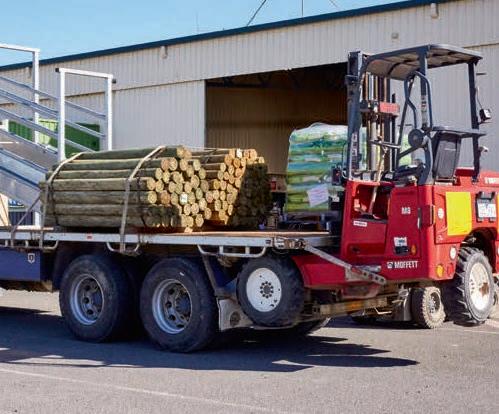
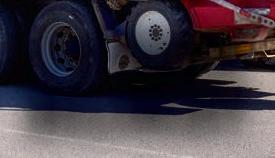
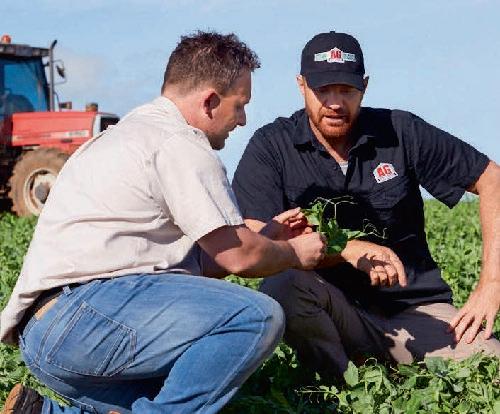

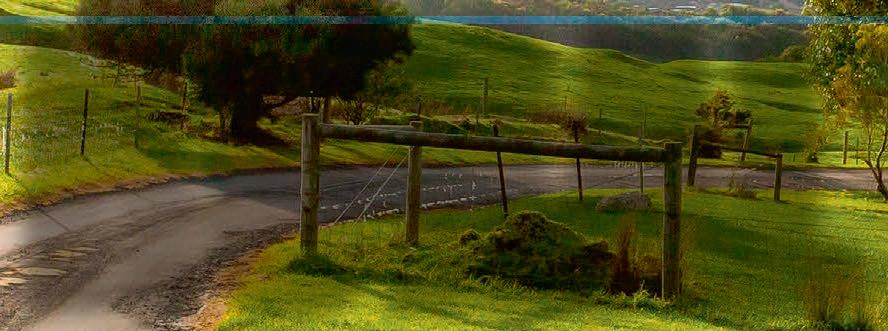



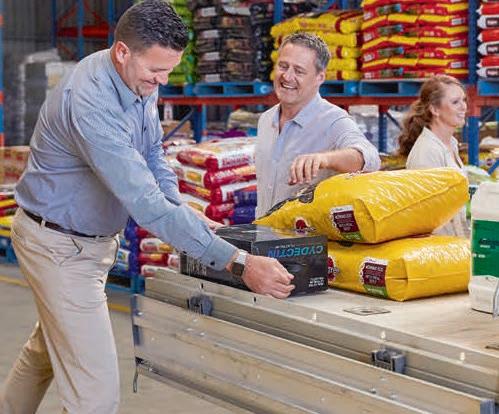
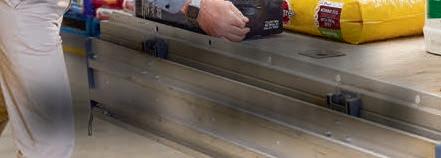

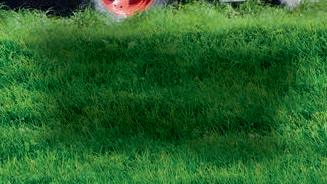
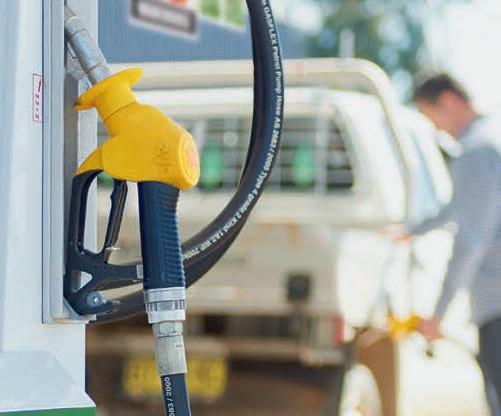

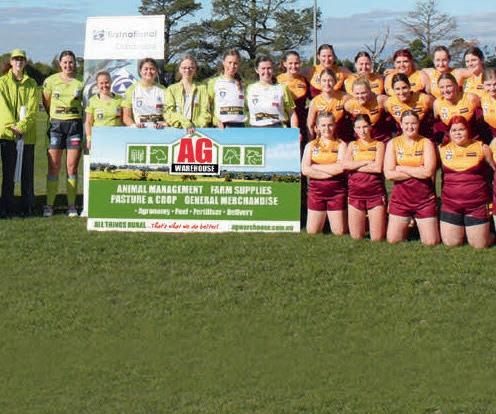
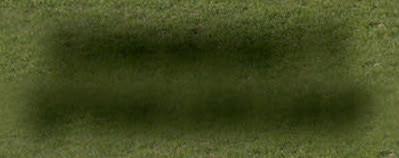
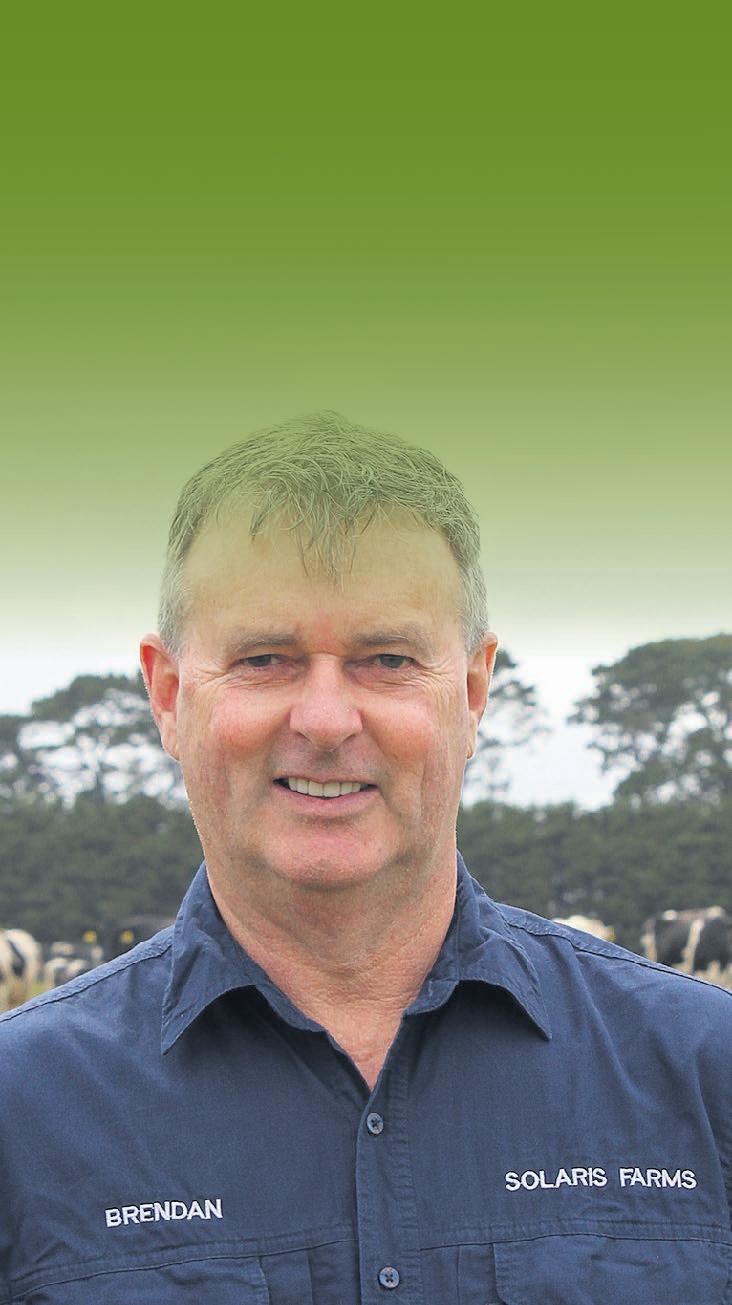



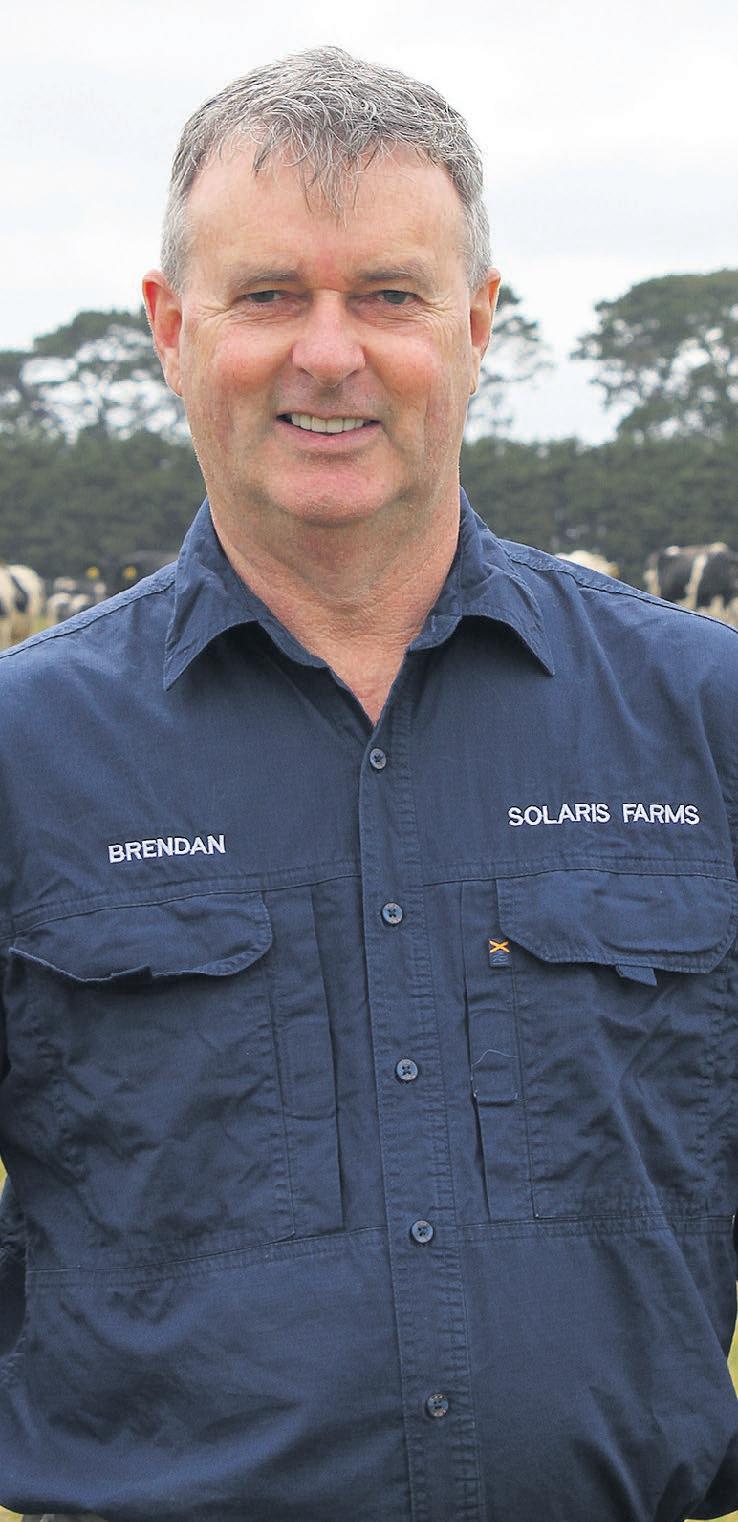
BY BRENDAN REA
In recent months, my experiences have me reflecting on how we approach dairy farming in today’s world and the importance of dairy farm business advancement through research.
Three things have shaped this reflection: the daily routine of feeding out to get my herd through this drought, talking to others about Dairy Australia’s Grounds for Growth event, and the WestVic Dairy Young Dairy Network event with guest speaker Gavin Hunt.
The current environment and political landscape present both challenges and opportunities for dairy farmers.
During the Grounds for Growth event in March, I saw farmers taking a chance and embracing change in pasture management.
They shared their motivations for experimenting a multi-species pastures approach. These motivations included managing dry conditions, mitigating erosion, coping with the fluctuating cost of nitrogen and bridging the feed gap during summer/autumn when feed is most expensive.
This multi-species approach is certainly not the norm, requiring innovation and open-mindedness to design effective pasture and forage mixes.
At the event scientists shared insights about the known and unknown aspects of this approach. Open sharing about what is working, and what is not, sparked good discussion about
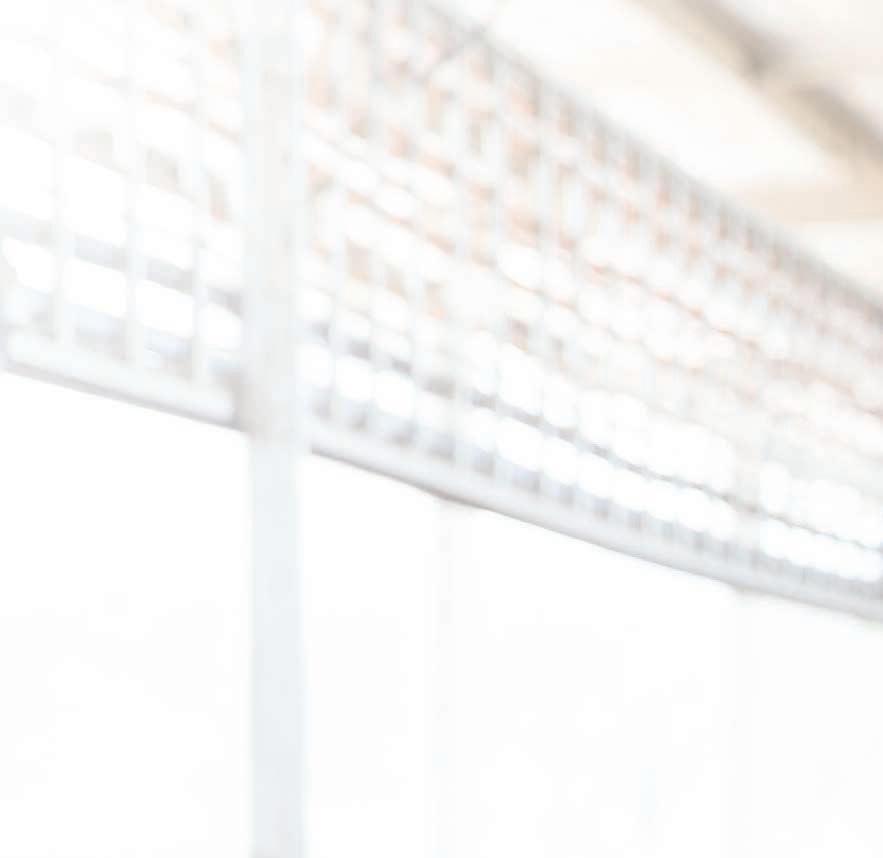

sustainable paths that ensure productivity and profitability.
Although there is still much to learn and more questions than answers, these methods hold potential for building a farm’s resilience to the political, environmental and market circumstances we find ourselves in.
This event reinforced the importance of innovation. Embracing new ideas has always been and will continue to be crucial for the future of agriculture.
In March, I also attended a WestVic Dairy Young Dairy Network (YDN) event. The YDN program supports young dairy farmers in their careers.
At this event, young farmers had the opportunity to hear from Gavin Hunt, who has extensive experience in the Irish dairy industry, including managing Farm Zero C, an innovative project focused on achieving a climate-neutral dairy farm.
It was a pleasure chatting with the YDN members. These local young farmers are forward thinking, and eager to learn how to remain environmentally and economically sustainable as consumer demands for sustainably produced food continues to rise.
Their commitment to adapting and evolving will set them up well for success.
WestVic Dairy and Dairy Australia are committed to advancing research and innovation, providing farmers with the latest information to enhance production, profitability, and sustainability.
As part of this commitment, WestVic Dairy has organised workshops for April and May: Understanding Farm Carbon: This workshop focuses on reducing your farm’s greenhouse gas emissions to protect profitability and sustainability while preparing your business for regulatory market changes. Sessions will be held in Heywood and Allansford, with one-on-one consultations available afterwards.
Understanding Environmental Practices: Scheduled in Allansford and Timboon, this workshop aims to help farmers better understand environmental benchmarks and identify actions to improve their farm's performance.
You can find out more and register for these workshops by visiting westvicdairy.com.au, emailing info@westvicdairy.com.au or calling the office on 5557 1000.
As I continue to feed out every day like many others, making farm businesses more resilient to environmental situations, like drought, is a constant consideration.
Embracing innovation and sustainability is not just a choice but a necessity for future success in dairy farming.
I hope that by the time you are reading this the autumn break has arrived. If not, let’s hope it comes soon and brings relief.
As I leave you with my thoughts for this month, I wish you a very happy time over Easter with friends and family.
– Brendan Rea is the WestVic Dairy chair.

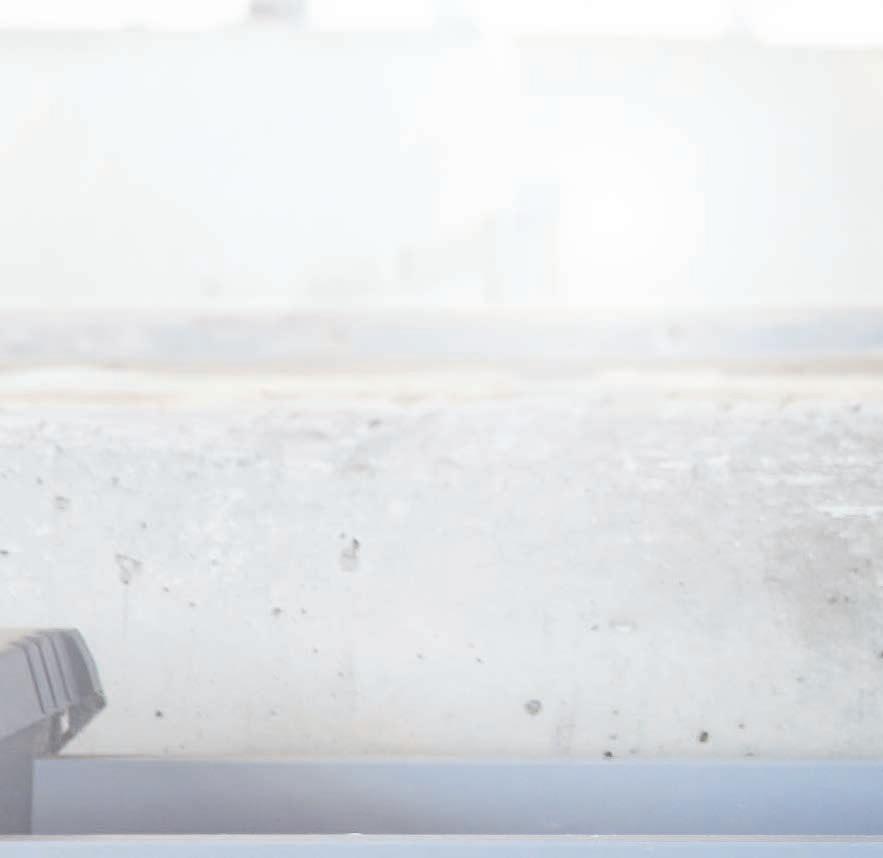
A culturally diverse workforcecan deliver many benefits to a dairy farm business. We’re wanting towork with farmers looking to improve how theyattract, lead and develop a diverse team.
Dairy Australia has partnered with the Gardiner Foundation to develop a one-to-one service supporting farmers who employ people from overseas.
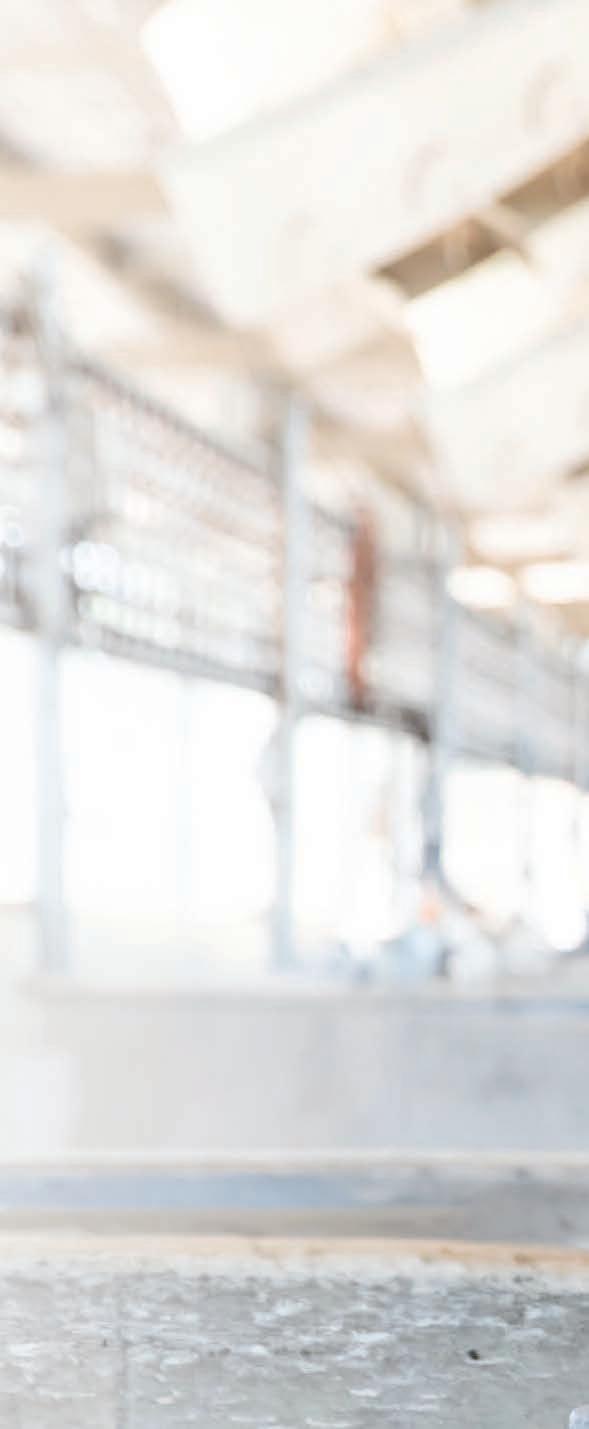




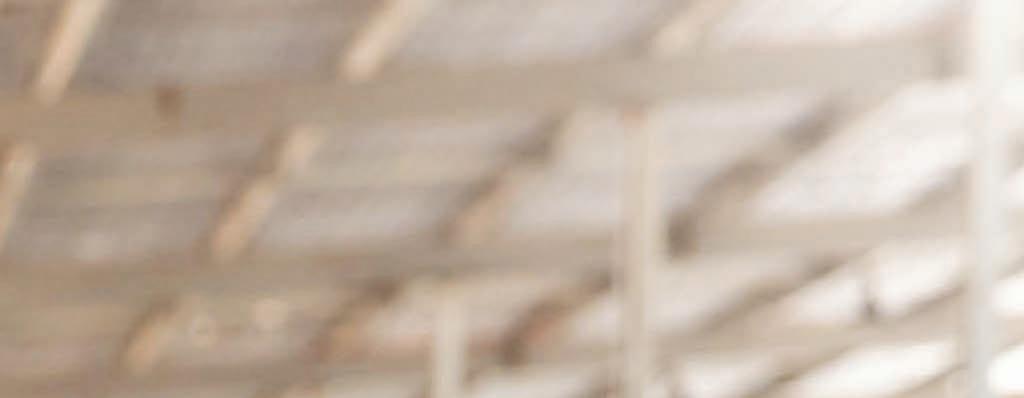
For more information contact Matthew Wood, WestVic Dairy Extension Advisor at matthew@westvicdairy.com.au or register your interest via the QR code.

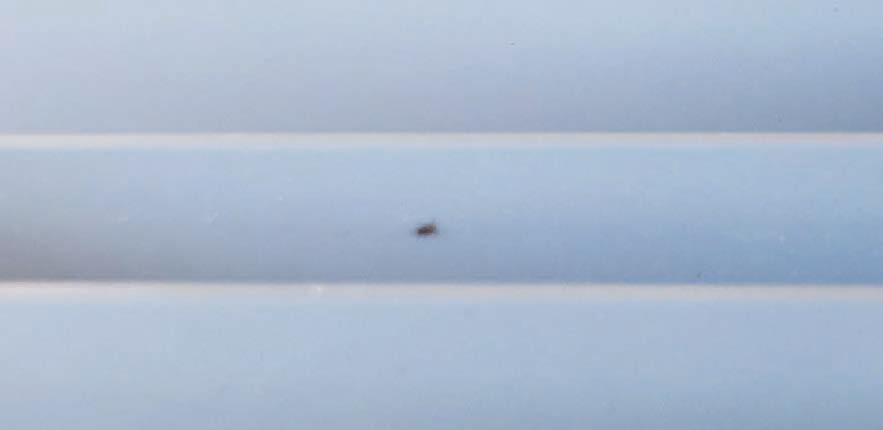


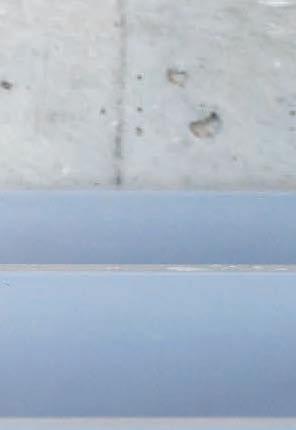










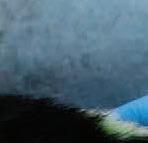




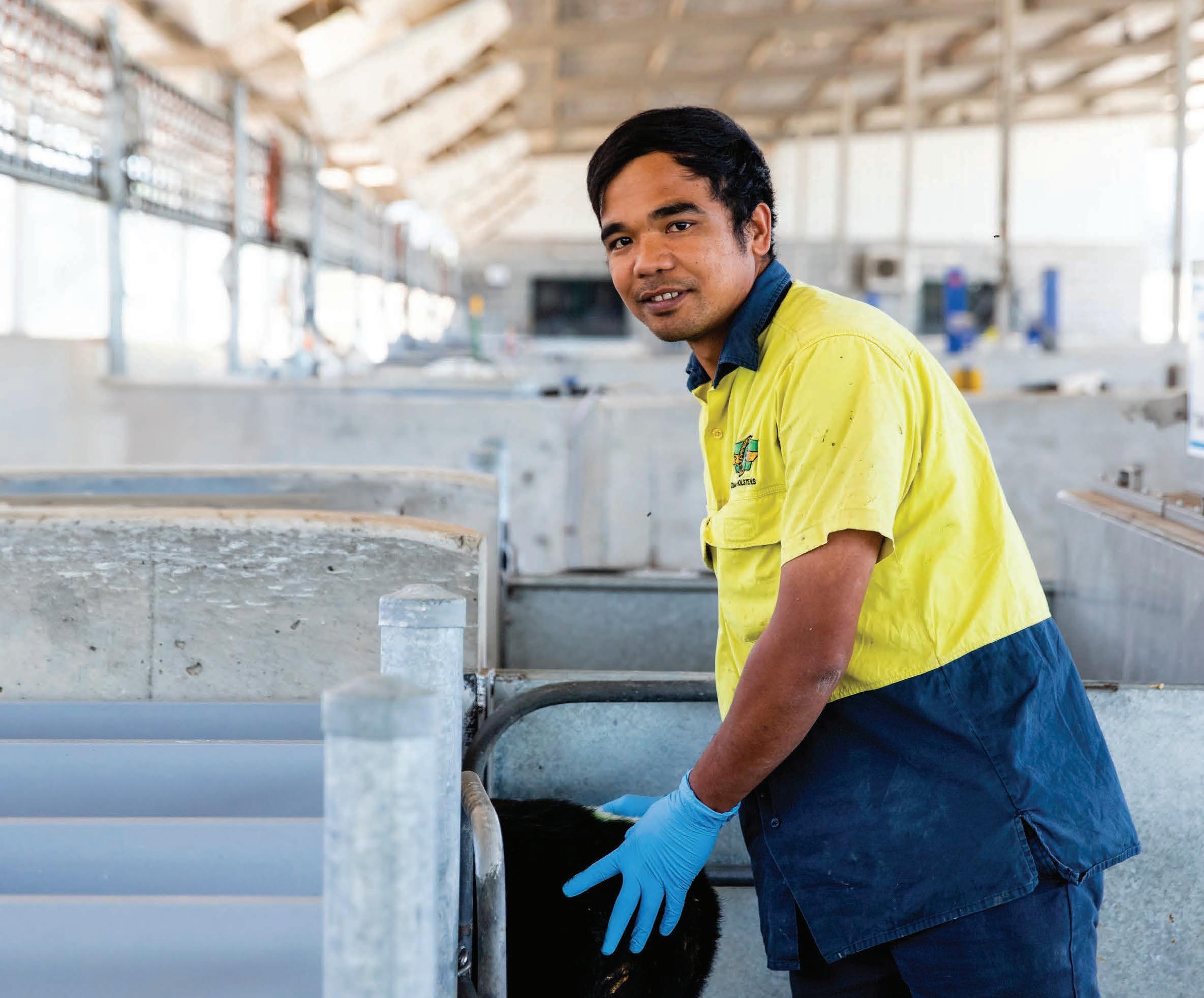
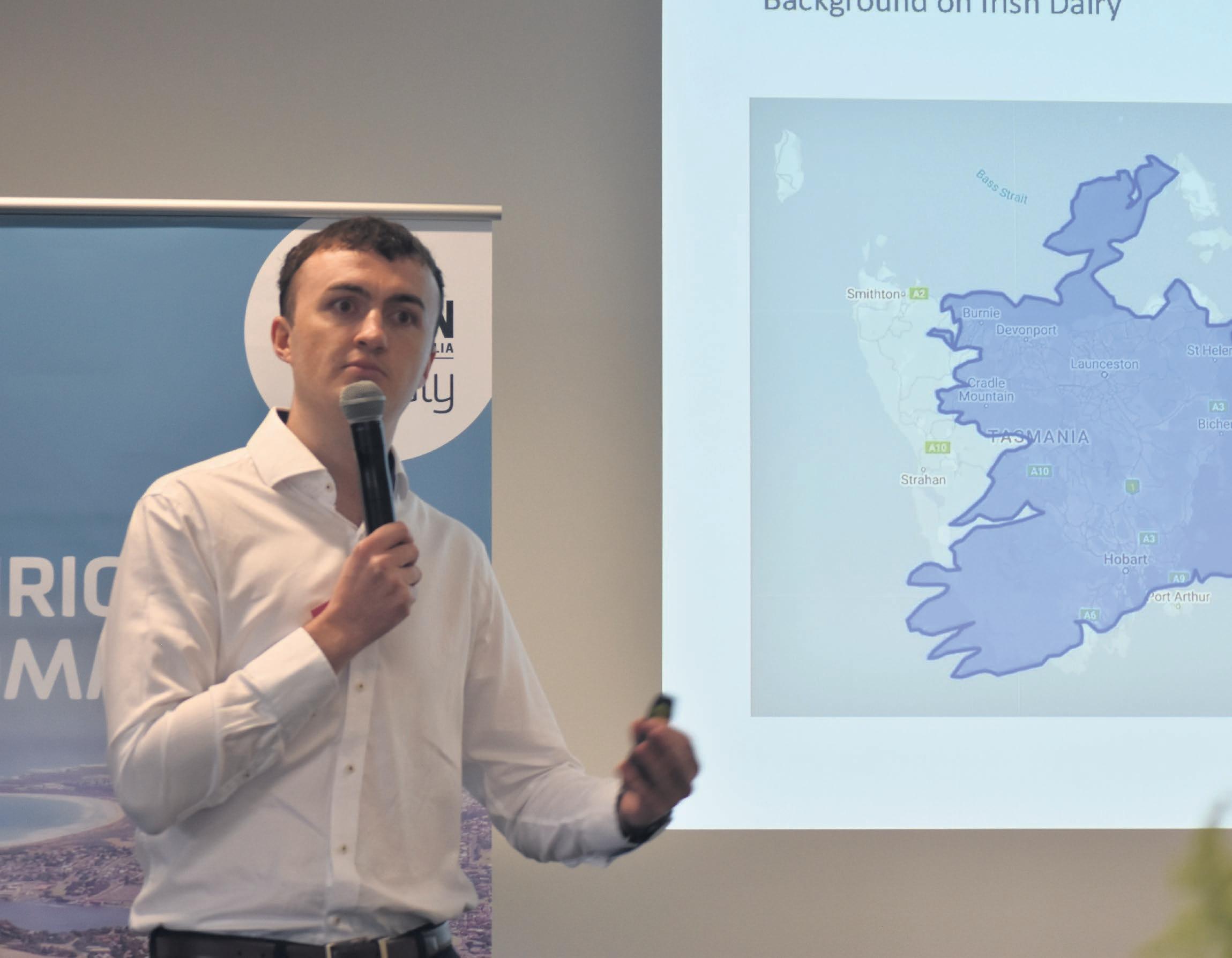

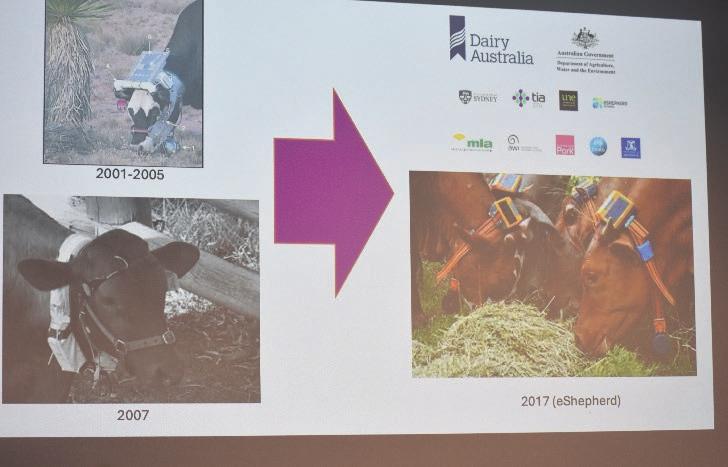
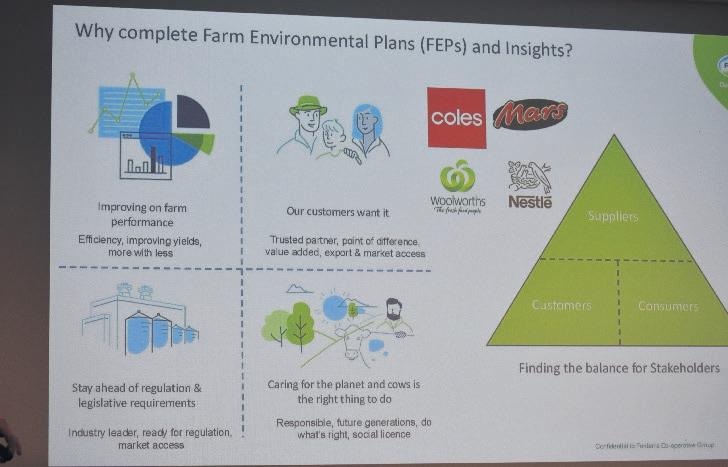
BY RICK BAYNE
SOUTH-WEST VICTORIA’S innovative dairy industry has been in the spotlight with a showcase highlighting some of the region’s premier farms and ground-breaking industry research.
Food and Fibre Great South Coast’s inaugural Southwest Showcase of Dairy Innovation on February 24 and 25 highlighted how advanced hydrogen technologies, robotics and food science could revolutionise agribusiness, unlock new markets, and drive the future of the dairy industry.
Participants also got to see inside the farm gate with tours to a robotic dairy and a farm with a strong emphasis on energy efficiencies.
Food and Fibre Great South Coast CEO Nicole Newman said the showcase was an opportunity to hear from experts in their fields and see farming innovation in practice.
“It was a great chance for us to showcase the amazing people that impact the dairy sector and all the small businesses that are producing and value adding to dairy produce,” Nicole said.
All local produce was featured during the showcase dinner at Deakin University.
Food and Fibre Great South Coast Chair and dairy farmer Oonagh Kirkpatrick said the event aimed to showcase new technologies and encourage all farmers to think about innovation.
Nicole said the event had been a success and she hoped more would follow.
At the dinner, Fonterra Farm Performance Manager – Farm Source, Gavin Hunt, outlined his journey from Ireland where he played a key role in managing Farm Zero C, a groundbreaking initiative focused on achieving a climate-neutral dairy farm, to his work with Fonterra in enhancing innovation, economic viability, and environmental sustainability for primary producers.
Gavin said Australian dairy already had a great story to tell about carbon emissions, but had
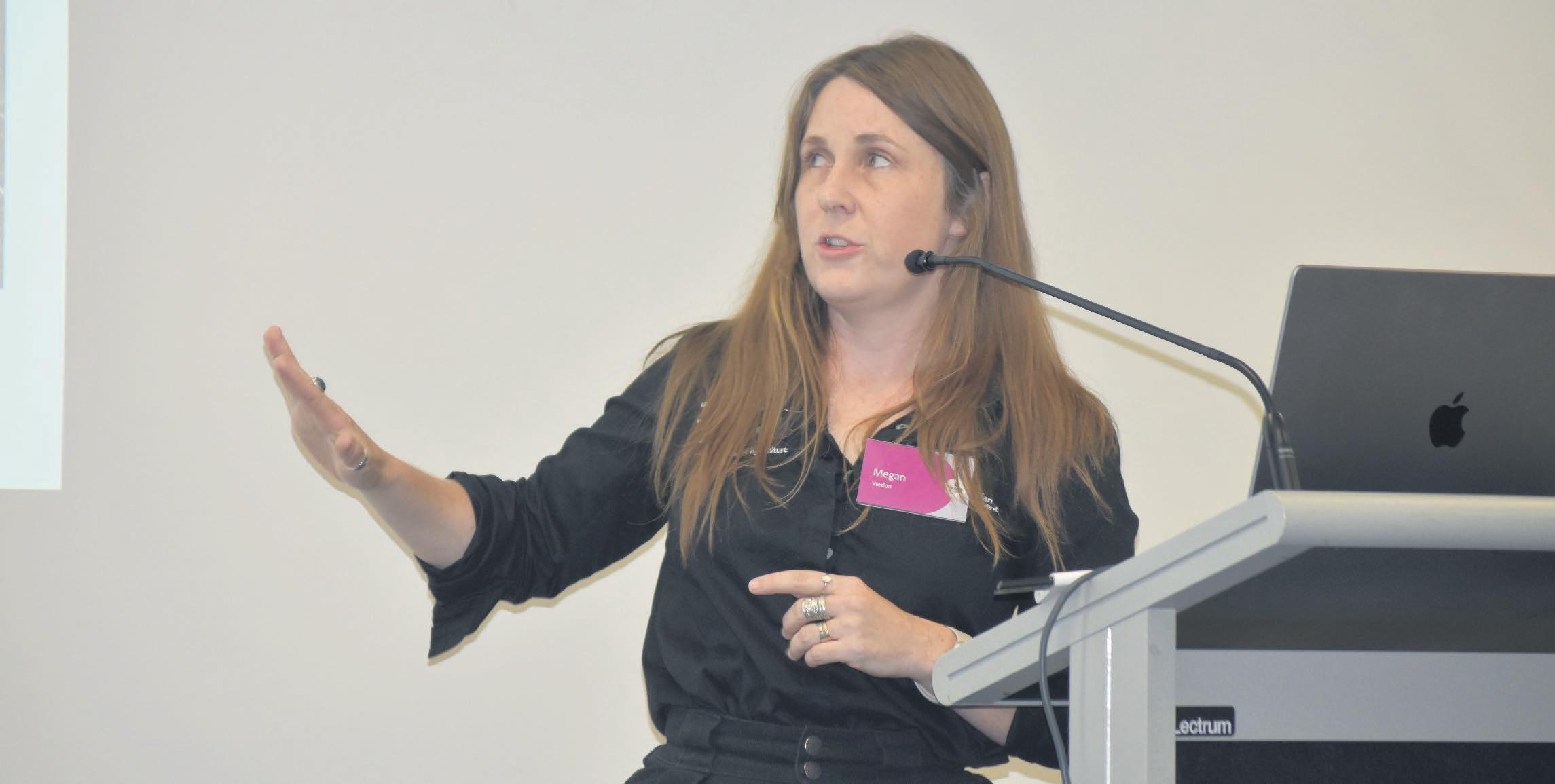
opportunities to build on that strength.
“There are big challenges to reach emissions targets, but any changes have to make sense and be practical for farmers,” he said.
Gavin works with farmers to implement farm environmental plans, and while they’re voluntary, already 50 per cent of Fonterra farmers have completed them.
“A productive and efficient farm is an environmentally friendly farm … they go hand-in-hand. If you can run an efficient business, your carbon emissions will start going down.”
Hydrogen industry specialist and hydrogen systems engineer at AMSL Aero, Simon Coburn, outlined some of the research and developments taking place to progress hydrogen-powered vehicles.
Simon said there could be many potential uses for hydrogen on farms, including using natural supplies, storing surplus electricity as hydrogen, as a diesel fuel replacement, for back-up power supply or for use in milk processing.
Senior Research Fellow at the Tasmanian Institute of Agriculture, within the University of Tasmania, Dr Megan Verdon, has been involved with several different research projects into virtual fencing, including how the technology works and how animals interact with it, benefits for pastures, labour and cow health and novel applications of the technology.
She told the dinner her research showed that the technology works and the animals adjust well
to the different management system without it having a negative impact on their welfare.
Port of Portland CEO Greg Burgoyne also outlined the operations of the port and his role as a Great South Coast Economic Futures Project Steering Committee member.
Participants also got to visit Deakin Hycel’s proposed research program.
There were also visits to the Doolan family farm at Ecklin to see its innovation in energy generation and use and the Smith family farm at Nullawarren where a world-first rotary robotic dairy is in use.
Funding for the showcase was received from Agri Futures with support from the DemoDAIRY Prep.
BY RICK BAYNE
SIMON SCOTT was once told that farming was all about profit, never about production.
It’s advice he has taken to heart, though turning a profit on Barongarook West farm near Colac in south-west Victoria hasn’t always been easy, even when production was high.
Since converting to regenerative and organic farming, Simon’s fortunes have turned, and he’s a long way ahead of the $57 annual profit he posted a few years ago.
Simon told Dairy Australia’s Grounds for Growth conference that his move to multispecies pastures and a focus on flexible management, grazing, stocking and milking had changed his fortunes.
He has fewer issues with herd health, better milk solids production and better financial outcomes since implementing the changes.
Not only has he changed the pastures, Simon had altered his milking times, changed his calving and feeding routines and peaked his herd at 280.
He credits a lot of the success to soil biodiversity improving soil function.
“If we look after the soil, it will look after us,” he said.
Simon told the conference in Warrnambool that the improved soil function was achieved by replacing rye-grass pastures with annual and perennial multispecies, including mixes of legumes, herbs and grasses.
“We’ve seen improved soil structure and aggregation, a lot higher air and water infiltration, and increased organic matter and water holding capacity,”
The pastures also extend the seasons with better growth going into summer and better rebound when autumn rains arrive.
There is reduced erosion and less pugging in winter. The higher ground cover with multispecies keeps the soil cooler during summer so there’s less evaporation and more regrowth with summer rain.
Grounds for Growth participants toured Simon’s farm as part of the soil and pasture biodiversity event supporting farmers with adopting multispecies pastures and other practices to improve soil health and function.
The Scott family has been on the land since 1939 when it was all native bush. His grandfather started as a potato grower with a few cows.
about 10 years ago, the farm was chosen as a focus farm and while they were hitting industry benchmarks, Simon said something wasn’t adding up.
“We were conventional and achieved pretty good results with low cost of feed per milk solids, but one year before going organic, my tax return showed a $57 profit for the year.”
At that point, Simon’s wife Linda wanted to leave the industry and while she now works off-farm, she also sees the light at the end of the tunnel with the new management.
Simon started by eliminating synthetic fertilisers, herbicides and insecticides.
“My opinion is that synthetic nitrogen destroys the relationship between the plant and the biology,” he said.
“We were up to 200 kilos of nitrogen per hectare, which was heavier than most dryland farms, but we noticed that over four or five years the responses diminished.”
Converting to organic wasn’t an instant success.
“When we went organic, the wheels fell off for 18 months,” Simon said.
“We went cold turkey, but I thought we spent over $100,000 on urea and other synthetics, if I put that into supplements that
“We’ve seen improved soil structure and aggregation, a lot higher air and water in ltration, and increased organic matter and water holding capacity.”
— Simon Scott
would bridge the gap and it did. We got through it.”
The results continue to impress, including Brix levels that never went above three per cent in the rye-grass now averaging 12-15.
The farm has been growing up to 17-18 tonne per hectare dry matter with summer crops, but this year that has reduced to about 8-10 tonne because of the dry spell.
The cows are performing well under the new regime. There is reduced lameness, production has been maintained and fat and protein levels have improved.
Calves are fed a bit of grain, but once they’re weaned, they’re on multispecies.
Despite the challenging season, Simon survived without feeding any hay to cows until the start of March.
“When you grow a multispecies pasture, you get the Darwin effect – each plant will grow more than it would on its own” he said.
“German research has shown four or more species will produce more biomass with no added nitrogen than one or two species with 200 kilos of nitrogen.”
Another big change has been with flexible milking times.
Two years ago, they spent the whole season milking three times in two days.
For the past 12 months they went back to twice a day because of the tough season and the opportunity to get more grain into the cows, but Simon is going back to the flexible routine.
“On reflection, I’ll never milk twice a day again,” he said.
The dairy is in the middle, but it’s up to 4km to either end of the farm.
“That’s one of the reasons for going to flexible milking – we used to have a lot of cows with lameness, now we have very little.”
The farm has been in Dairy Farm Monitor program for 12 years and is tracking well against other businesses.
The stocking rate is 70 per cent liveweight per hectare, on average with other farms, home grown feed consumed is five tonne per hectare, just below the region average, but they graze 3.9 tonnes per cow, well above the south-west average 2.3.
Home grown feed costs $79 a tonne less than half the regional average of $161 a tonne, and milk solids per labour unit is 64,000kg kilos versus an average 56,000kg for similar litres.
Feed costs of $3.36 are below the average $4.24 and an EBIT of $4.71 makes it the second most profitable farm per cow in the southwest, nearly double the average of $2.40.
The net income last year was $3 – double the south-west average of $1.50, and Simon predicts he’ll maintain $3 this year, while a lot of others will struggle.
“We’re batting above our weight and my goal is $6 a kilo milk solids profit.”
Enjoying a comfortable annual profit last year, Simon says it’s a big turnaround from $57.
More stories from Dairy Australia’s Grounds for Growth conference are in the national section of this month’s Dairy News Australia and online at: https://www.dairynewsaustralia.com.au/
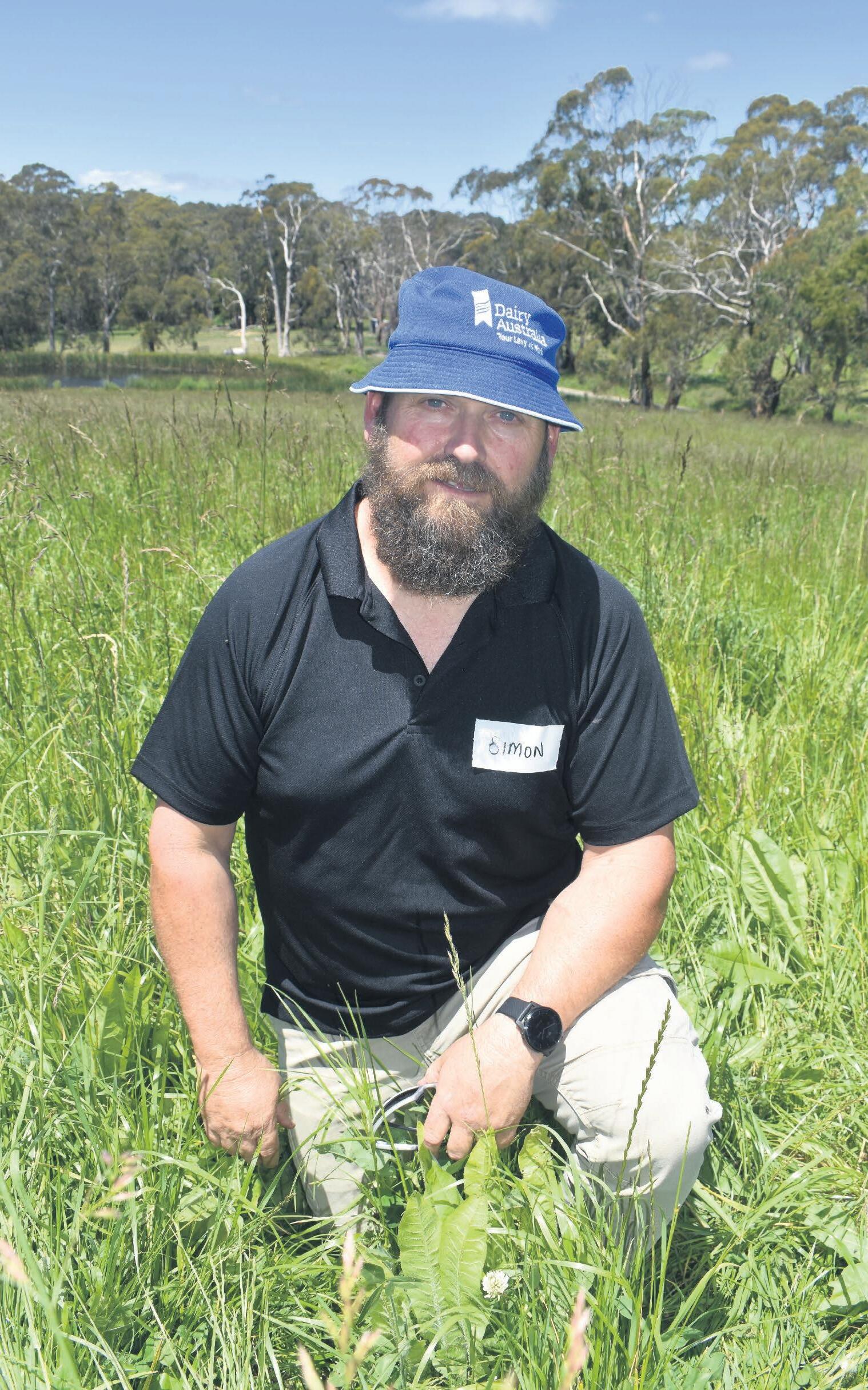
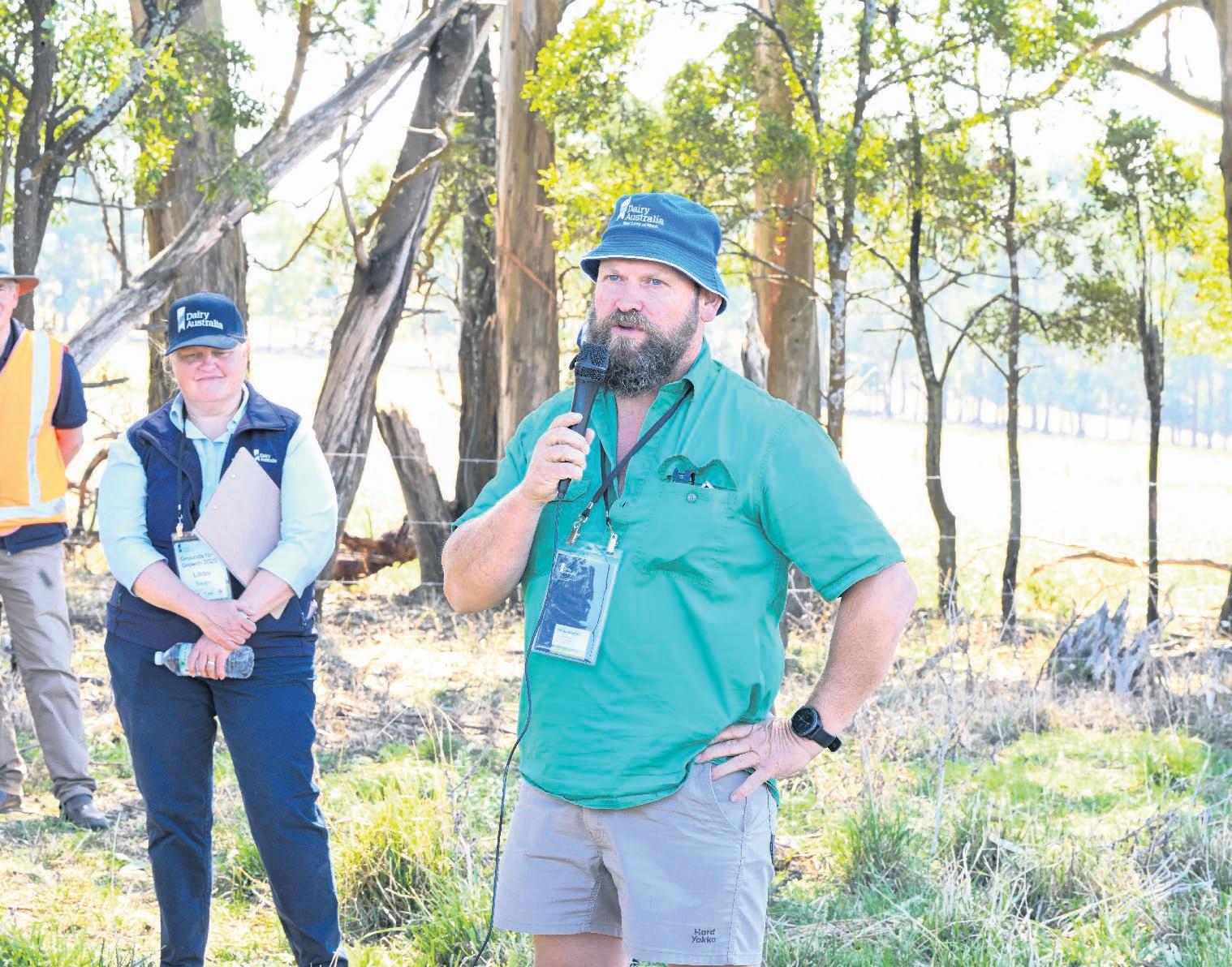
DAIRY FARMERS from south-west Victoria have learnt about different pathways to farm ownership and different approaches to farm management during a study tour to Tasmania.
The Port Campbell Dairy Discussion Group tour, supported by DemoDAIRY Foundation, took 14 local farmers and three service providers to six different farms over three days in February.
Discussion group treasurer and Timboonbased agronomist, James O’Brien, said the tour had been an invaluable experience, giving participants many options to consider for their own enterprises.
Two of the farms, including the Tasmania Institute of Agriculture research farm, are utilising Halter virtual fencing and herding collars.
Mr O’Brien said an on-farm demonstration was an eye-opener.
“It was interesting to watch as the cows got the message and start turning around to where they should go. They moved very easily.”
The group also visited a farm milking 10 times in seven days.
“It was driven by labour shortages and they were very happy with how it was working,” Mr O’Brien said.
Six of the tour group were young farmers moving towards farm ownership who benefited from talks with three young Tasmanian farmers on different pathways to farm ownership.
“We had quite a few young people on the
trip and they got some good ideas about potential pathways to farm ownership, including some who sharefarm on one property and part-own another property that they sharefarm with someone else and employ a manager,” Mr O’Brien said.
“We don’t see or hear of much of that in Victoria.”
There was also a focus on grazing management, though all the farms had irrigation making it difficult to compare to most local farms.
Mr O’Brien said the tour was beneficial.
“Everyone who went will think about different approaches to farm ownership and management that could be brought back here.”
The Port Campbell Dairy Discussion Group has been operating for nearly 60 years and is the oldest dairy discussion group in Australia.
The group usually hosts a tour every few years but this was the first in 10 years due to the pandemic.
“The idea is to expose members to other ideas and to look at other farms, which is always part of what we do as a discussion group — move around different farms and look at what everyone is doing,” Mr O’Brien said.
DemoDAIRY Foundation covered the cost of accommodation and transport, along with a produce hamper put together in Timboon to present to the host farms. WestVic Dairy organised the farm tours.
“DemoDAIRY Foundation’s input and
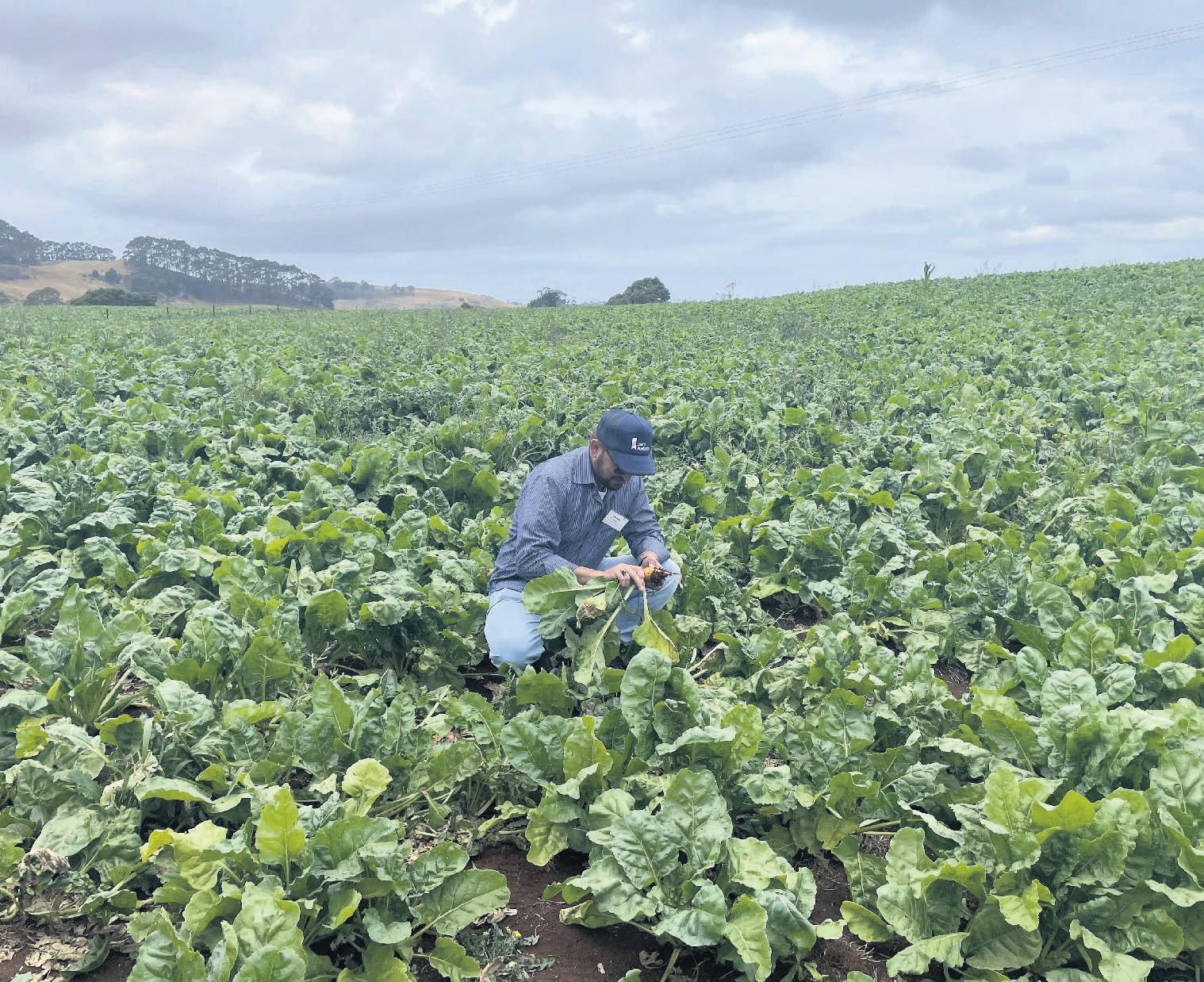
assistance was invaluable and the participants gained a great deal from the trip,” Mr O’Brien said.
DemoDAIRY Foundation is keen to sponsor and support more people in the dairy
farming industry.
More information can be found at https:// www.demodairy.com.au/scholarships/ or from DDF secretary Ian Teese on 0427 358987 or itag@bigpond.com

FROM 169,000
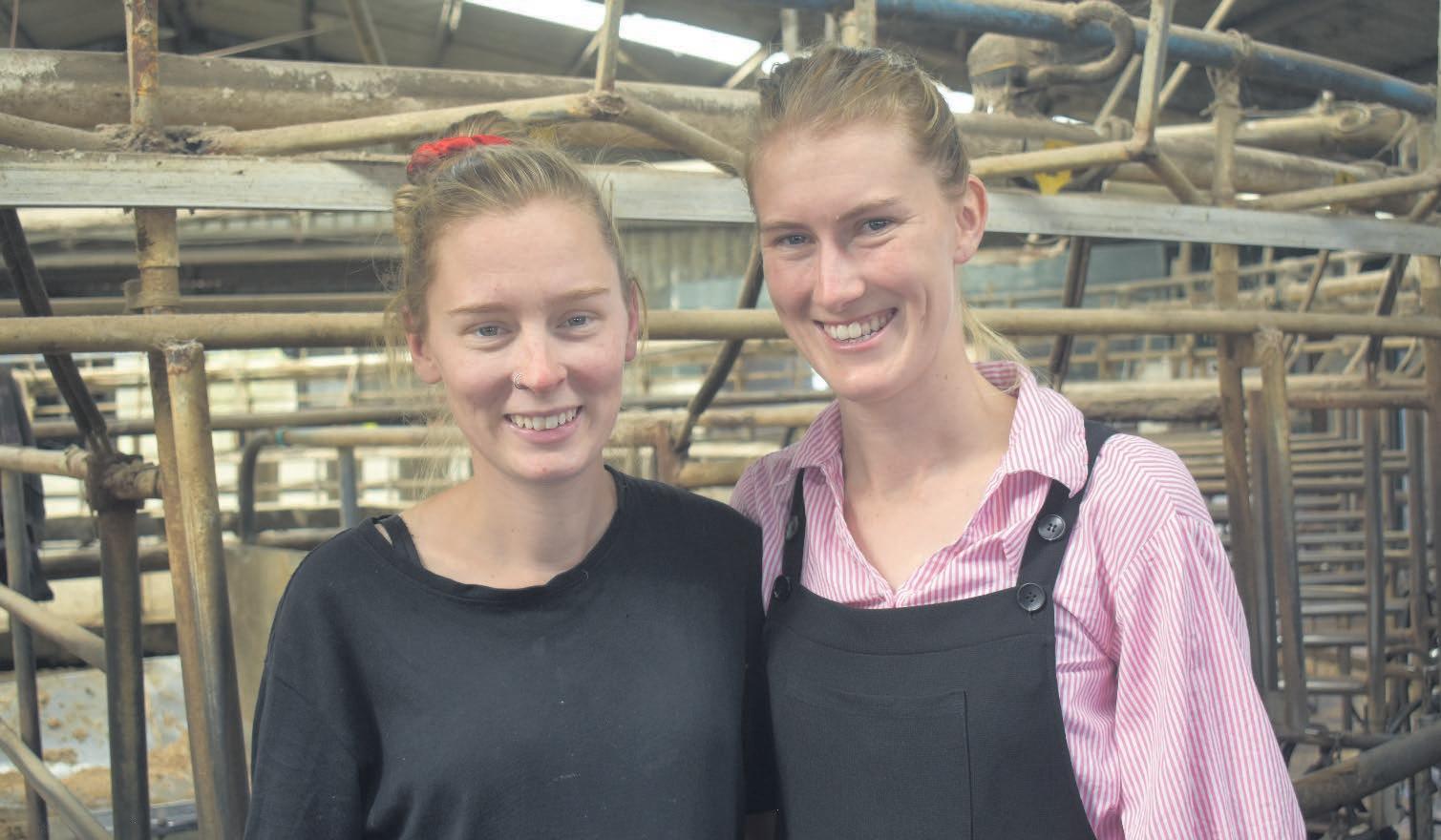
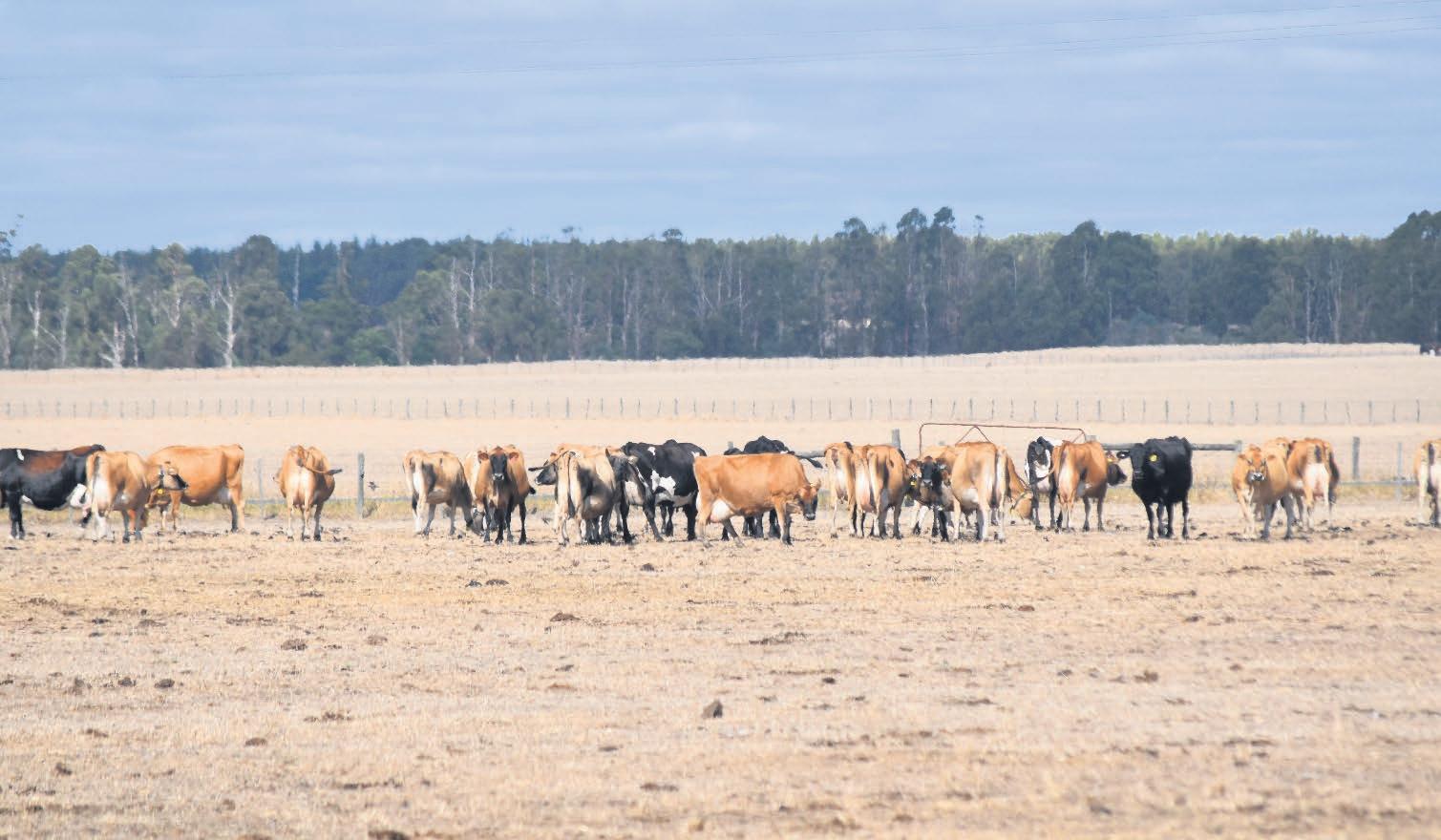
BY RICK BAYNE
IN THE 1980s, the Eurythmics and Aretha Franklin sang about Sisters Are Doing it for Themselves.
It’s a song that could very well be played on farms around Winchelsea as the Parish sisters carve out a career in both dairy and beef — even though some of their fondest memories of growing up on the farm relate to their father David playing John Denver songs as they joined him on the tractor.
Four of the five Parish sisters are actively involved in farming and the fifth is studying in the United States and eventually plans to return to Australia to help farmers with their mental health.
It’s a family affair that continues to grow.
Leading the dynasty are Lyn and David Parish who, alongside David’s brother Paul, own two adjoining dairy farms and one beef farm south of Winchelsea.
The property holdings have grown over the years to accommodate more cows, but also to give their daughters an opportunity to pursue farming careers.
The Parish family has been farming in the area since 1949, expanding with the beef property in 1997 and adding the second dairy farm in 2021. Lyn, David and Paul manage the home dairy farm Bonnie View, David and daughters Jodie and Wendy oversee the recent dairy farm addition, Retreat Creek, and daughter Elizabeth runs the beef farm.
Eldest daughter Sam runs a beef and sheep farm in South Gippsland with her husband Nick, regularly taking dairy-beef crosses from both of the dairy farms.
The only daughter not actively connected to the farming business is Kasey, who is now studying her masters in psychology in the US and plans to complete her PhD in the field, but she maintains a strong interest in the enterprises.
Sam enjoys being part of the family business from afar, but plans to make it a closer connection in the next year.
“I grew up here, and we are in the process of transitioning back home in the next 12 months,” she said.
“We want to maintain the property at Gippsland, but integrate back into the family business, though we’re not entirely sure what that will look like.
“This is home and I love being close to family and friends. I love being here.”
Sam had a career with animal health companies in Australia and New Zealand before finishing corporate work last year to focus on family.
Apart from the composite flock and Angus operation on the Gippsland farm, they also finish the family’s crossbreds.
“Jodie and Wendy raise them from a day old, then they go to Eliabeth for a short period or they come to us in Gippsland and we grow them out,”
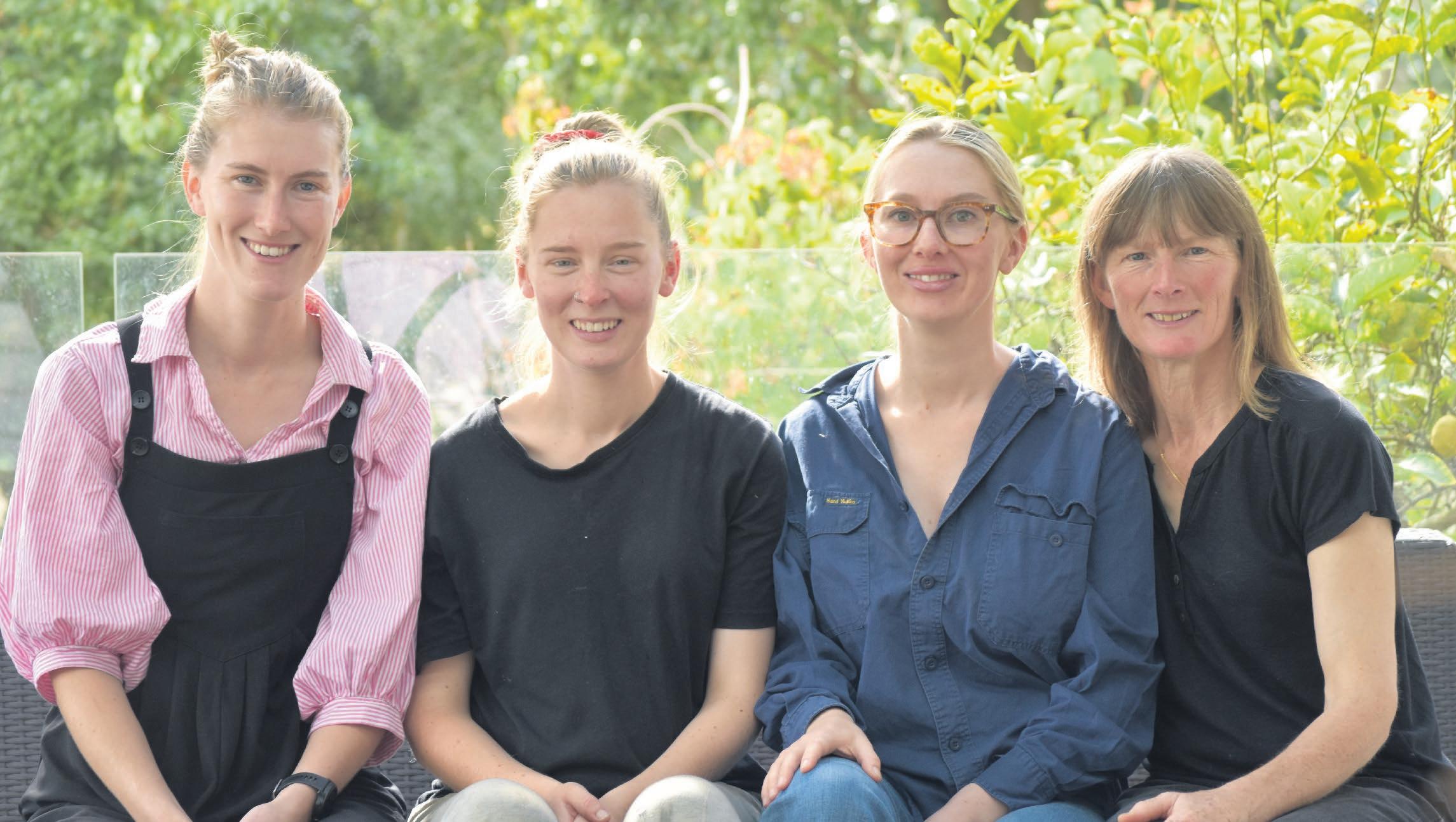
she said.
“Depending on where the market is at, we’ll either process them through Greenhams or look at marketing options elsewhere.”
Second-youngest daughter, Jodie is full-time on the Retreat Creek farm, and mother to two-yearold Reggie.
The farm has about 700 dairy cows, calving twice a year, on 400ha.
The former occupational therapist now runs the farm’s day-to-day operations.
Sister Wendy works four-days-a-week as a vet, but helps out on the farm on her days off.
The farm has a mixed bag of cows, Holsteins and Aussie Reds from the previous owner and lower BPI Jersey cows sent from Bonnie View.
They calve a lot of the lower BPI cows to Angus beef, to limit dairy numbers and maintain the successful cow rotation system.
Jodie and Wendy don’t mind taking the lower-level BPI cows.
“They’re still good productive cows and if we didn’t do the recycling of animals through the farms, we wouldn’t be able to run as many herd numbers at Retreat Creek if we had to hold all crossbreds on farm.
“It saves a lot of dairy bobby calves, so it’s a good thing to do from a welfare perspective as well as the business benefits,” Wendy said.
“We’re lucky. Not many farms have a system where you can take the calves off to another farm.”
The top cows that come from Lyn are bred to
Jersey and the lower ones get Angus, with the BPI scores, production figures and herd testing results contributing to the decision.
“We don’t do BPI testing on the herd, only herd test quarterly. The tops of the herd go through to be joined to their respective breed, if not to Angus,” Wendy said
They have plenty of replacements, so about half the cows are going to Angus at the moment.
“We don’t cull if they are still a good milking cow,” Wendy said.
“We’ve got cows 14 years old that still milk as hard as the others. Longevity is a big thing.”
Sam said the beef connections had been invaluable.
“It has recently changed so that the animal only needs to be at least 50 per cent Angus to be classified as Angus for marketing purposes. That works in our favour.”
It has been a tough climatic season in southwest Victoria, but Retreat Creek’s irrigation has helped them to get through.
A new pivot has been operational for 15 months, helping maintain the summer crops for longer, though water reserves are being held at the moment for stock.
While Jodie milks, feeds and covers most farm jobs, David manages the pastures and Wendy takes care of animal health.
“We try to balance things so we can take a day off,” Wendy said.
“We try to help each other out, but Jodie takes
the front role and I help out where I can.”
The sisters enjoy the farming lifestyle and working together.
“We have a few barnies from time-to-time, but we quickly get over it,” Wendy said.
“We work well together and know how we tick,” Jodie said.
“We can read the other person and know when they need a break.”
At Retreat Creek, Jodie, David and Wendy make the decisions for day-to-day management, while for bigger business decisions it goes back to Lyn and David and Paul.
Lyn decides which cows stay and which go from her farm.
The sisters enjoy the camaraderie of farming together and hope to extend that opportunity to another generation.
Sam’s earliest farm memory is being small enough to fit on the small pillow behind the tractor seat as her father worked while listening to John Denver songs.
She also remembers seeing a cow’s caesarean birth and being intrigued by the process.
Jodie and Wendy have memories of drawing pictures on the dairy wall and two cots and a big old rocking pram being set up in the dairy.
“We enjoyed growing up on the farm and the lifestyle it creates and we want to give that opportunity to our children,” Jodie said.
The Parish dynasty looks set to continue.
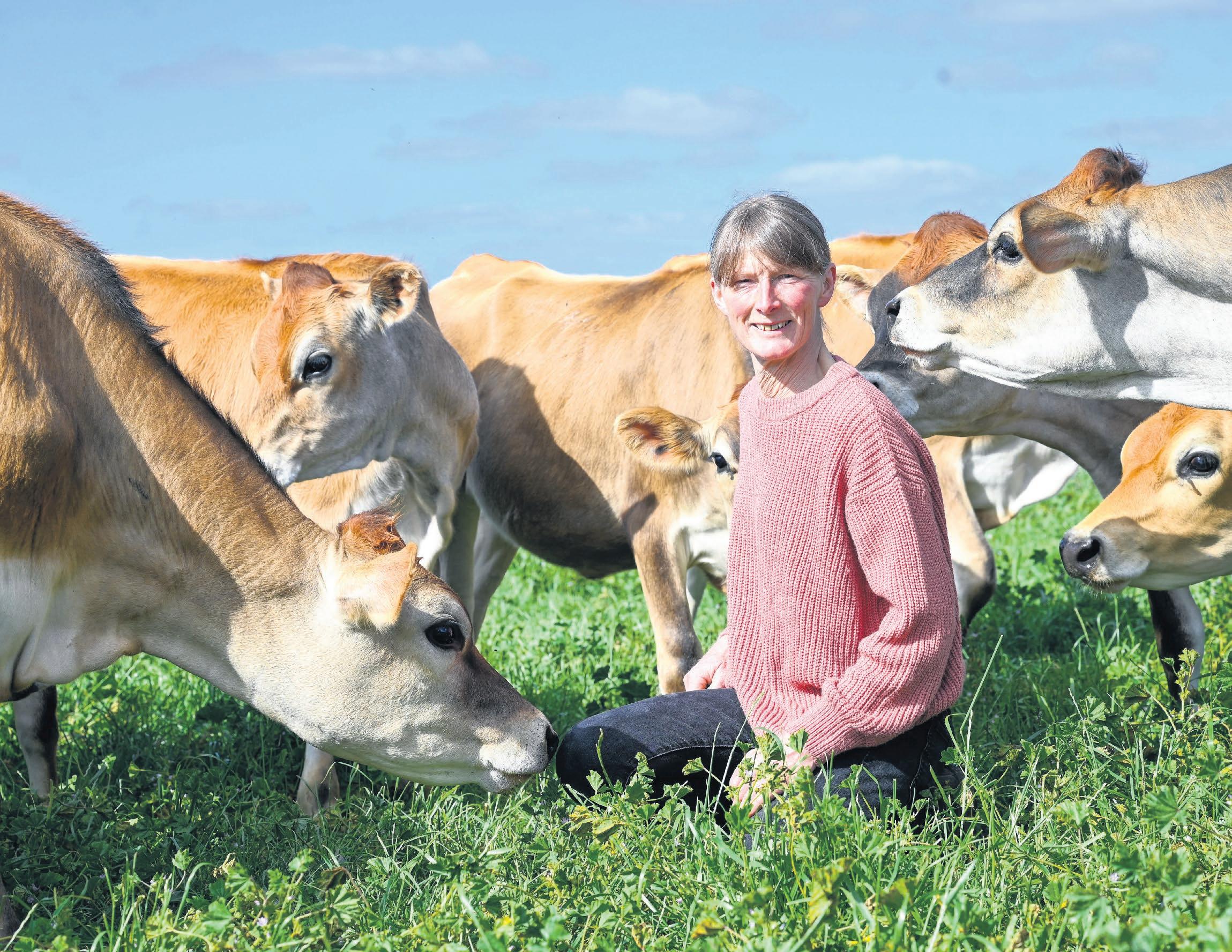
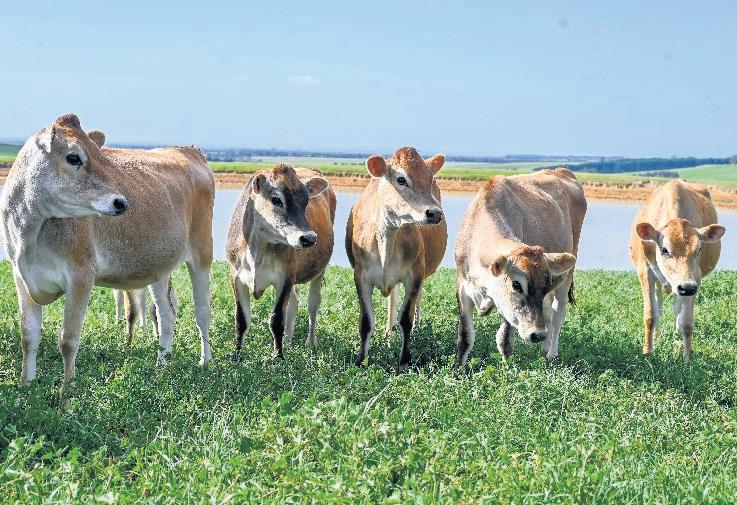
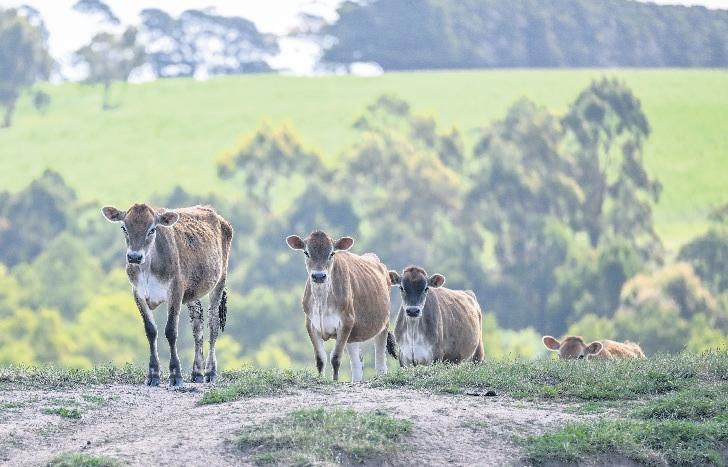
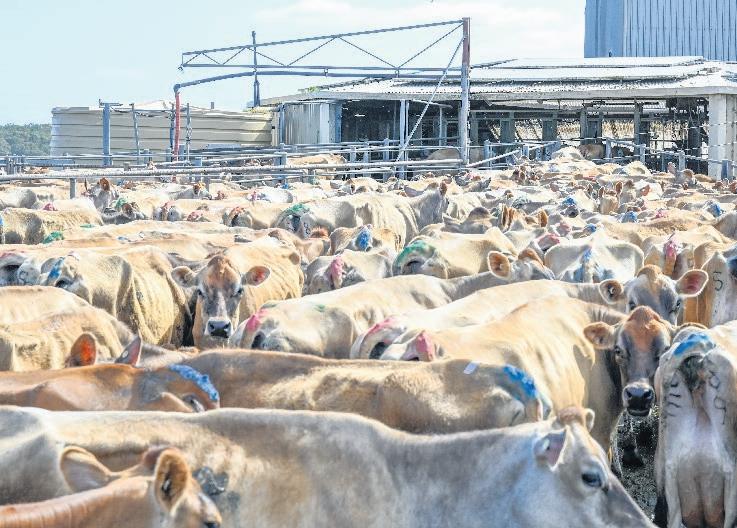
BY RICK BAYNE
WHAT DO you do when you have too many cows to fit on one farm?
For the Parish family of Winchelsea, you buy a second dairy farm, plus you turn to beef-dairy crosses to populate a third adjoining family beef farm.
And if they’re all full, some of the beef crosses can be trucked off to another family member’s farm in Gippsland.
The rotational system is all about using the land and the animals to their best advantage and with a family that loves farming, it’s a good way to keep everyone involved.
The main family farm south of Winchelsea, Bonnie View, is home to the Dornoch Jerseys, recognised as one of the top herds in the country, and it will host visitors from across the world in April when the World Jersey Conference comes to Australia.
The nearby beef farm was purchased in 1997, and in 2021 a second dairy farm, Retreat Creek, was added to the portfolio.
Retreat Creek was purchased to deal with the overcrowding problem, but it has an added bonus of irrigation, which has been particularly handy this summer.
The Parish family has been farming in the area since late 1949 when Ernie and Jean Parish invested in stud Jersey heifers in the 1960s.
The stud aspect was left dormant for a long time before the farm’s current owners, Lyn and David Parish and David’s brother Paul, were inspired in 2015 to make a comeback after winning some on-farm challenges.
“We were just a commercial herd until December 2015 when we reinstated the stud’s name Dornoch — a Scottish word for rolling green hills — and started the slow process of registering all the animals,” Lyn said.
Lyn’s passion for achieving a high BPI herd is
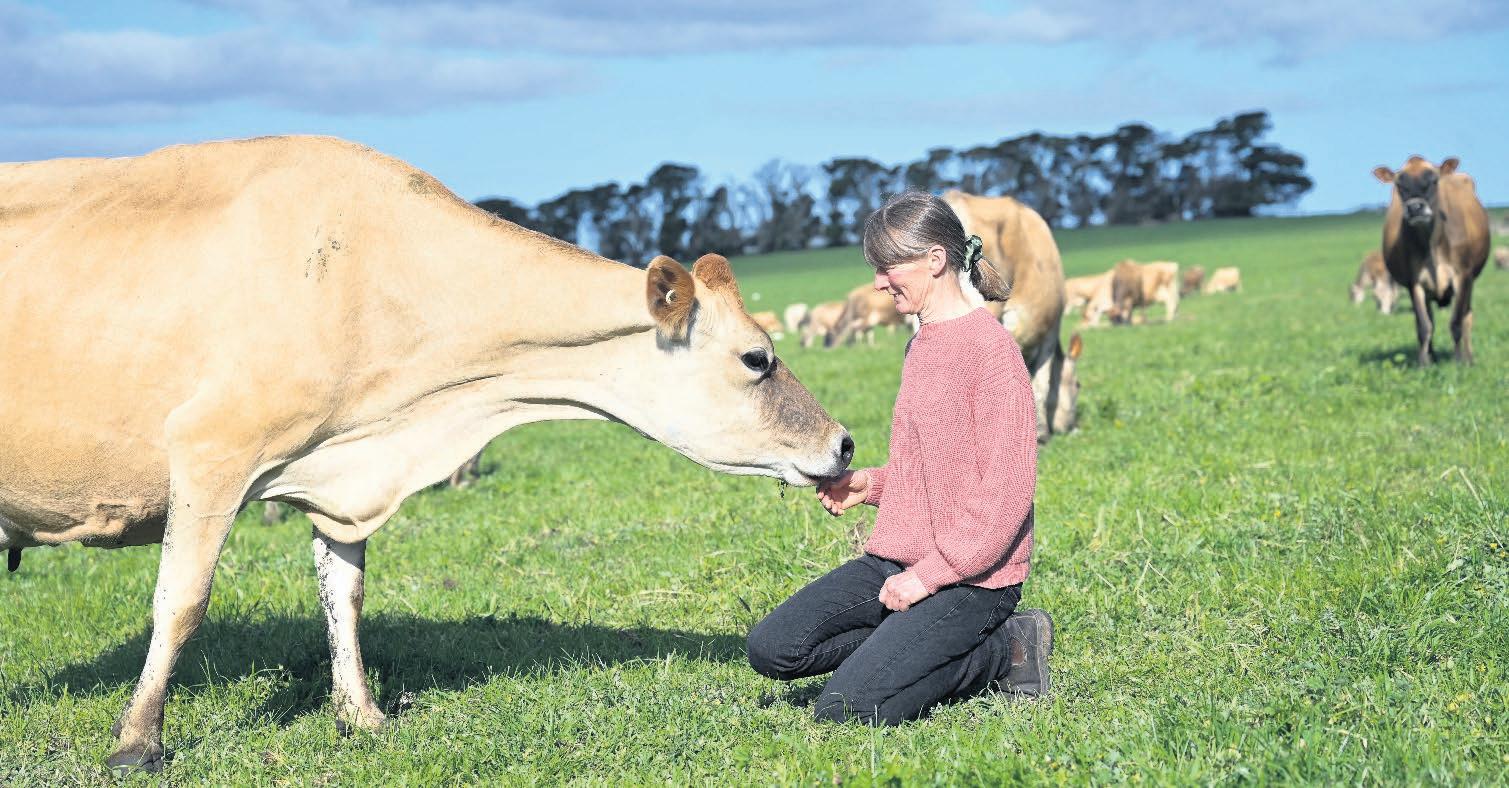
or 130 to the other farm,” Lyn said.
When Dornoch Jerseys first appeared on the BPI lists, it was ranked 278 out of about 320 Jersey herds.
Barely a decade later, they’ve peaked at number five on the December list, and Lyn believes she can go even higher.
“It’s an exciting time,” she said.
“We have many calves and heifers coming through that are featuring right up at the top of the BPI rankings.”
Bonnie View peaks at 800 cows in spring, but Lyn admits that’s too many.
While Bonnie View is totally Jersey, the second dairy farm is mixed bag, with some of the former sharefarmers’ cows along with other purchases covering Holstein, Illawarra, Aussie Reds and crossbreds along with the lower performing Jerseys that Lyn sends across.
The relocation march happens at least once a year, most often during spring when the home farm is over-populated.
“It’s a walkable distance, so we just walk 100
“We take them down a laneway, let them stop and have a feed and then walk them on. It takes about an hour and a half.”
Lyn has the call about which cows stay and which go, and she admits it’s sometimes hard to say goodbye.
“It can be tough, but then you forget about them eventually.”
There’s no return ticket — once they leave Bonnie View, they don’t return.
“At Retreat Creek they’re just looking for production, not worrying about the BPI, and they’re cows that I don’t want to breed from because they will pull my BPI down.”
Lyn attributes the stud’s improved BPI performance to her insistence on selectively using high BPI bulls, and focusing on fertility, components and health traits.
“We’re focused on breeding hard-working functional cows that suit a commercial operation,” Lyn said.
The production performance is still high among the relocated cows.
Lyn also attributes a lot of her breeding program’s success to consultant Amy Wright, who evaluates heifers each year and creates individualised breeding reports and discusses bull choices.
Retreat Creek is run by Lyn and David’s daughter Jodie, alongside her sister Wendy around her duties as a vet.
Lower performing cows are also bred to Angus through the Greenham dairy-beef program at Retreat Creek.
Once dairy-beef calves are reared to just past the weaning stage, they are shipped to the beef farm, which is managed by another daughter, Elizabeth.
And the rotations don’t stop there. If there are still too many beef cows, they are trucked off to Meeniyan in South Gippsland where another daughter, Sam, runs a beef enterprise with her husband Nick.
Completing the family, Lyn and David’s other daughter, Kasey, is in the United States studying psychology, and wants to return to Australia to help farmers dealing with mental health problems.
The family said that buying the extra farms with an eye on growth had been a good investment.
“If you have an opportunity to buy your neighbouring property, you grab it,” Lyn said.
“It doesn’t come around too many times.” If other options come up, they are likely to pounce.
Lyn grew up on a small hobby farm at Waurn Ponds and was heading for a career in agriculture.
“I had been accepted into Marcus Oldham, which didn’t happen for women very often back in those days, but then I met David and I never went.”
She has no regrets about the dairy farming life.
“I love being outdoors and around animals. It’s very satisfying to deliver a live calf or to help a sick animal to recover.”
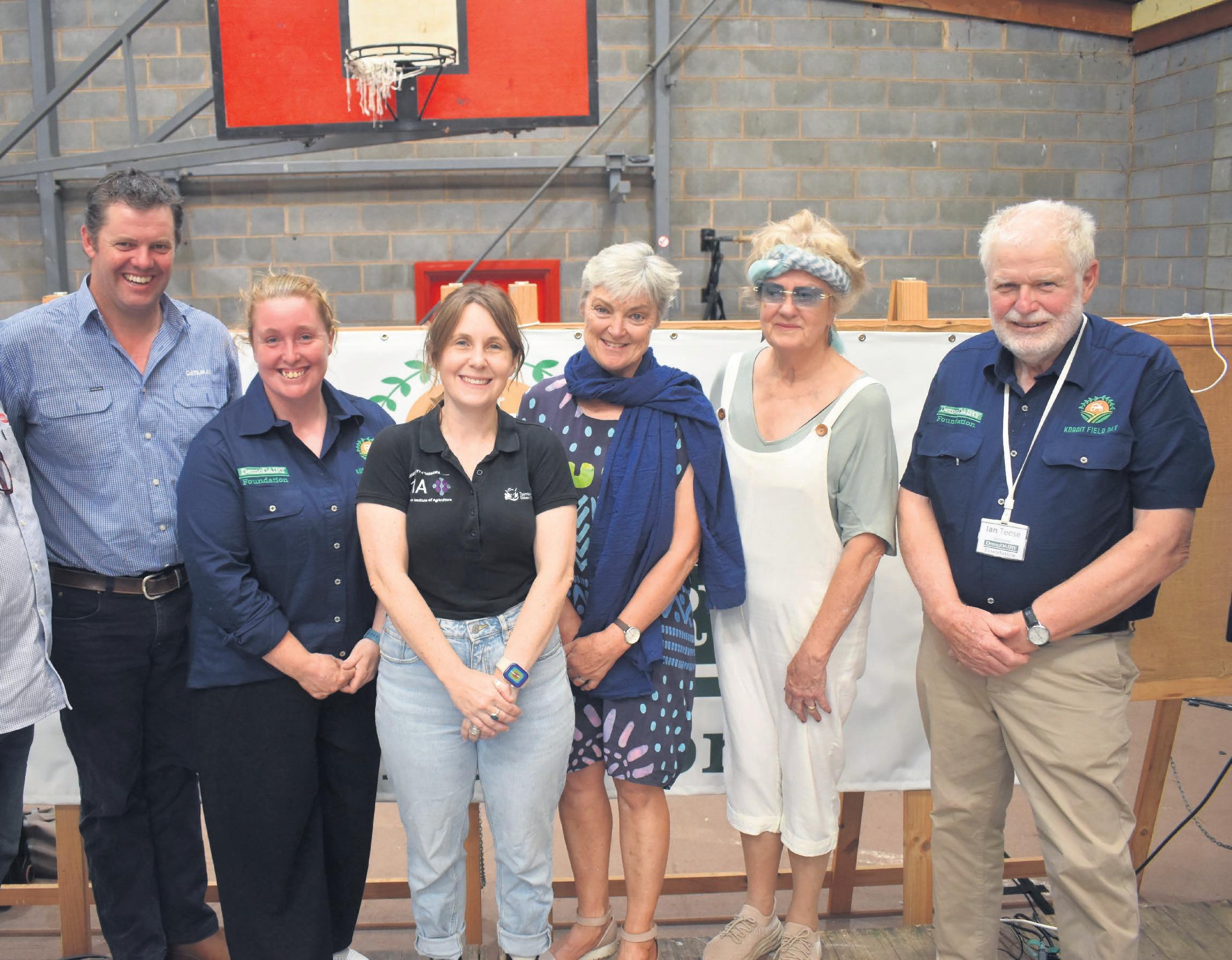
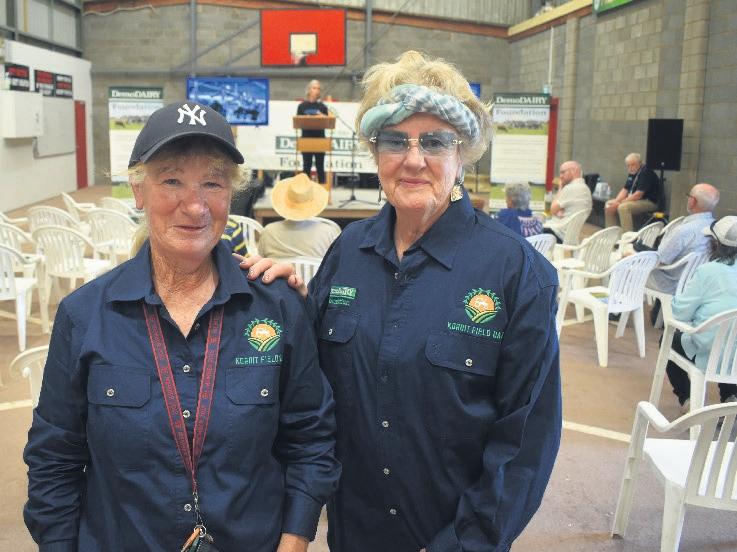
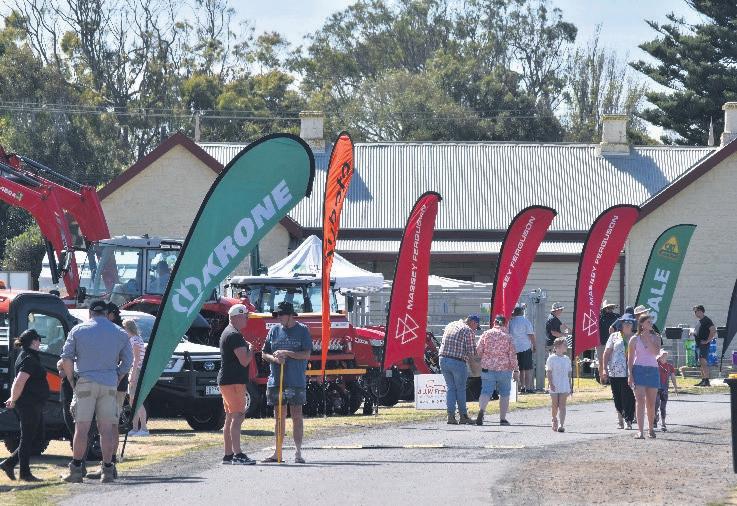
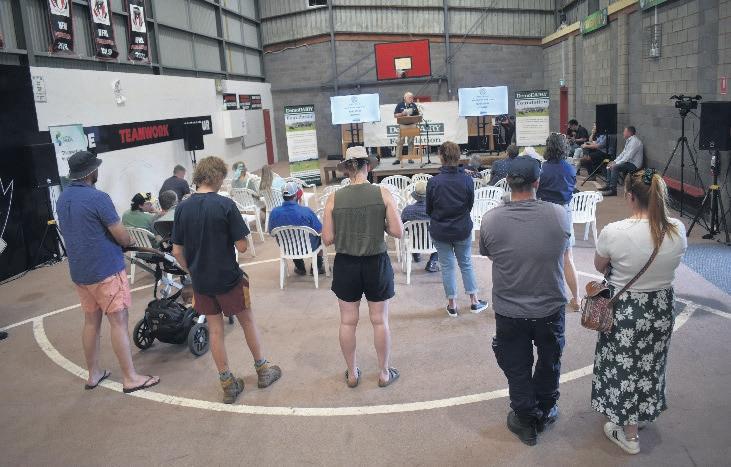
AGRICULTURAL FIELD days are set to continue and expand in south-west Victoria after the resounding success of an inaugural event at Koroit.
The return of an agricultural field day at Koroit on February 22 has been hailed as a huge success, attracting 55 exhibitors — more than double expectations — and plenty of interest from farmers across the region.
The field day was part of the Koroit Show and co-ordinator Julie Houlihan said it had exceeded expectations.
“We’ve already got exhibitors asking to return next year,” she said.
“We will be reviewing it later, but at this stage we’re likely to expand to two days and
hold the event on both Friday and Saturday next year.
“The feedback has been very positive.”
The field day fills a gap left by the Sungold Field Days that were last held at Allansford in 2020. The event had run since 1981 and was recognised as the one of Victoria’s premier agricultural field days.
DemoDAIRY Foundation provided major support for the new event’s innovation technical presentations and workshops.
The workshops focused on cow technology and precision farming, including cow wearables, virtual fencing, use of drones in agriculture, effluent management technology.
DemoDAIRY Foundation deputy chair
and local dairy farmer Chloe Brown said the foundation was proud to be part of the inaugural event.
“It has been a wonderful opportunity to showcase new technology and farm innovations to a diverse mix of farmers and industry providers,” she said.
“We were keen to support the reintroduction of an ag field day with an accompanying focus on technology and innovation and we look forward to continuing the partnership.”
This has been one of DemoDAIRY Foundation’s most significant projects.
The foundation agreed to contribute up to $30,000 so the field day could present and demonstrate new technologies available to
ELEVEN YOUNG people with connections to the south-west Victorian dairy industry have been given a financial boost to pursue further studies.
In January, the DemoDAIRY Foundation announced the first recipients of its 2025 round of scholarships, supporting students to continue studying everything from certificate III courses in agriculture, dairying and veterinary nursing to degrees in agriculture, veterinary science and engineering.
The students will each receive up to $6000 per year of study to help cover course-related expenses.
The scholarship recipients are:
Ella Sadler, Camperdown, Charles Sturt University, Wagga Wagga.
Jacquelien Pol, Scott’s Creek, Charles Sturt University, Wagga Wagga.
Lucy Allen, Framlingham, South West TAFE.
Leah Dickson, Garvoc, Gordon Institute, Geelong.
Rachel Dickson, Garvoc, University of Sydney.
Eliza Mounsey, Cobden, Longerenong College.
Taleah Murfitt, Framlingham, RIST.
Jazmine Negrello, Dixie, Marcus Oldham College.
Blair Sextus, Koroit, Deakin University, Waurn Ponds.
Matthew Swayne, Nalangil, Charles Sturt University.
Abbey Titmus, Wangoom, Charles Sturt University.
DemoDAIRY Foundation chair Andrea Vallance said the scholarships would help students to develop their skills and knowledge to contribute to the dairy industry.
“We are supporting students entering both vocational and higher education
courses, recognising the range of careers that make up the dairy industry and the broader agricultural sector,” Andrea said.
“We realise that country students are often disadvantaged in pursuing further education, but believe the support from the DemoDAIRY Foundation goes some way in balancing the ledger.”
The scholarships provide students with ongoing support through their selected course, which can be up to five years.
The new recipients join the eight existing DDF scholarship holders who will continue their studies in 2025.
More scholarship winners are expected to be announced soon.
DemoDAIRY Foundation is also supporting four young dairy industry people to join a Livestock Improvement Corporation dairy study tour to New Zealand and members of the Port Campbell Dairy Discussion
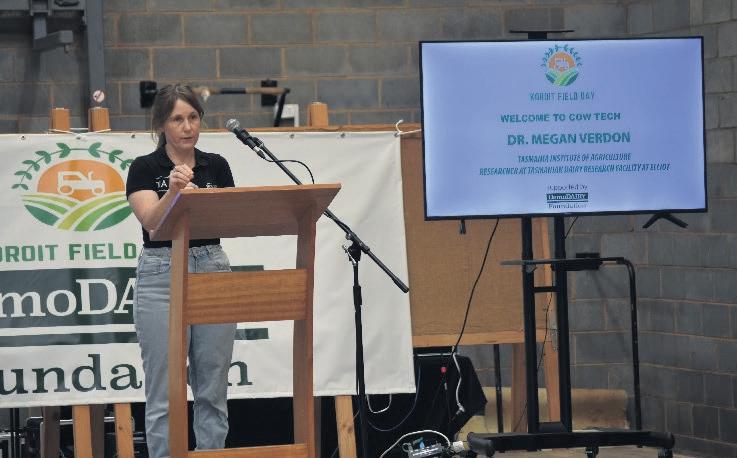
assist dairy farmers and to show the opportunities for young people in the local
on farm and also with service providers.
Group to make a short study tour to the northern Tasmanian dairy industry in February.
DemoDAIRY Foundation was formed in 2018 after the former DemoDAIRY Cooperative near Terang was wound up, with funds from the sale of the property invested into a fund.
During the six years to June 2024, the foundation provided scholarships and grants totalling $517,475.
In addition to these grants, the foundation also administers Powell Legacy Fund grants
DemoDAIRY Foundation is keen to sponsor and support more people in the dairy farming industry.
For further information, visit: https://www.demodairy.com.au/scholarships/ or from DDF secretary Ian Teese on 0427 358987 or itag@bigpond.com